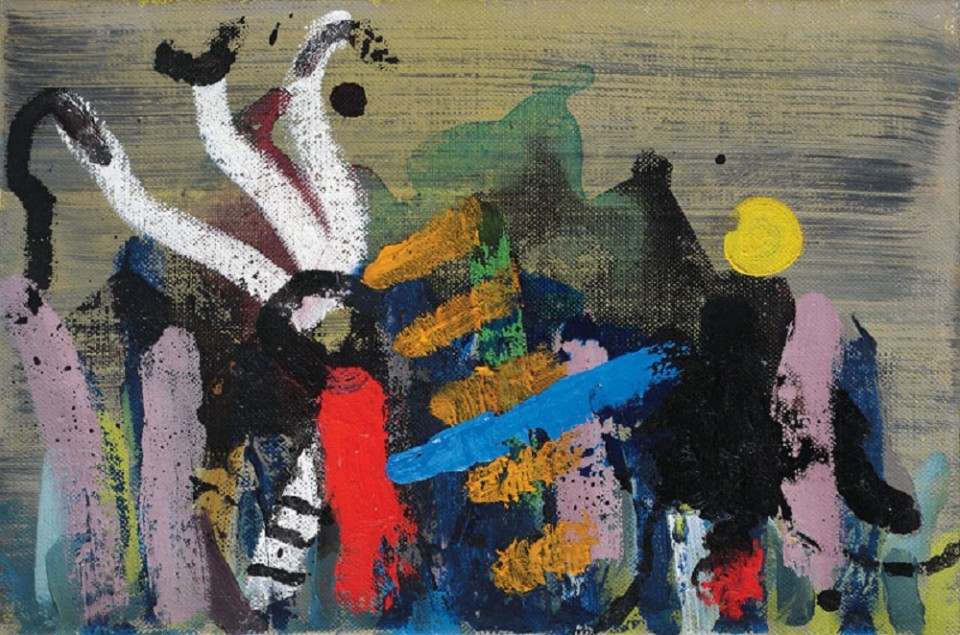Michal Biber "I happened to find"
By Yair Shulevitz (March 31, 2022)
Michal Biber’s new works bring up questions about the power of chance occurrence in creative work. They also ask whether what looks like a chance event may actually be something else. While Michal was pursuing cultural studies at the university, she experienced some difficulties and, following the advice of a lecturer who suggested that she should respond to the visual images that accompanied the lectures, she began to paint over these images while also maintaining an ideational affinity to the lecture’s topics in her work. After some time, she started to respond to the images freely, forgoing the need to be committed to the featured topic. This led her to the next stage: spilling paint on fabrics and allowing chance to work. Accidental blotches were created, which at times, hinted at images Biber chose to express more fully. This turn surprised those who knew BIber’s work, which until then was characterized by realist painting and a gaze that had internalized the values of classical painting. It is possible that already prior to taking the cultural studies course Biber had that being bound to painting based on observed images involves a reduction in the space of action and in artistic freedom. It may be that the outcome of the course as expressed in her art was part of a process that had already matured within her, and that the course had simply served as a catalyst to artistic developments that were bound to happen in Michal’s work.
When we look at her earlier work, dating to the time she finished her studies at Bezalel, we recognize some similarities to the series of new works presented at this exhibition, including the freely created color-patches and the bold colorfulness. This observable connection to the past highlights how in the creative lifespan of an artist there are cyclical processes of to-and-from, which, even after many years—and all the developments, passages and changes such processes bring—one can detect the fundamentals that reveal an identifiable personal language that remains present in the painted manuscript.
The freedom and spontaneity that characterize Biber’s new works exhibit a new freshness in Michal’s creative passion, even though this turn in her work was propelled by external pressures. This can be paralleled with the following statement, taken from the Sanhedrin, 105 B: “through engaging in them not for their own sake, he will ultimately come to engage in them for their own sake.” To me, this statement is very meaningful, and it broadly correlates with what processes of creating are about.
Michal Biber is an artist who searches for precise tools of expression that are unique to her, without leering towards fashionable trends. She feels that she needs to ground herself in observation-based painting, and at the same time, she doesn’t want to lose the freedom made available by painting from an imagination that is untethered to the image.

